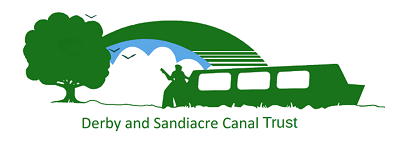The Derby Canal: Protecting Biodiversity In Derbyshire
**A guest article from Ali Ashton**
Britain’s biodiversity has declined by over 50% in the last 50 years. Restoration projects provide the opportunity to prevent further decline and promote local biodiversity, protecting existing wildlife and cultivating new habitats for species of birds, plants, animals and insects. With the restoration of the Derby Canal will come a green corridor to do just that, ultimately enhancing biodiversity throughout the county.
In the Hedgerow
Originally planted to protect the towpath from neighbouring livestock, a canal’s hedgerow provides food, shelter and breeding grounds for a variety of species, and serves to connect habitats in grasslands and woodlands to allow wildlife to move safely between areas. Many original towpath hedgerows were hawthorn, as its density and thorned armour made it a good barrier against farm animals. Although less commonly sighted than birds and insects, the hedgerows lining a canal can attract hedgehogs, shrews and bats, and encourage a diverse array of vegetation to thrive beneath them, including plants like cow parsley.
Implementation of The Draycott Project has seen the planting of new hedgerows, incorporating and adding to the original Hawthorn and creating the ‘golden mile’. Hawthorn, commonly known as the May tree, owing to its blooming period in mid-spring, can support over 300 insects. Its autumn berries, known as haws, feed small mammals and numerous birds, and its blossom attracts dormice, who feed on the flowers; and bees, who enjoy the nectar and help to pollinate the plant. The damage to Britain’s biodiversity is exemplified by bees, who are widely known to need the support of conservationists. The simple act of renovating the hedgerows regenerates a thriving and diverse habitat along the canal, helping to protect the the species who need it the most.
In the Water
The British canal network is home to rich variety of fish, from roach to perch to stickleback. Canal restoration work hopes to protect more endangered species like bullheads, who, while rare, enjoy the cleaner waters found around locks. Rebuilding projects such as the work done at Borrowash Bottom Lock cultivate habitats for breeds like the bullhead, who require a diversity of habitats throughout their lifespan. The water can also provide a home to water snails, water boatmen and whirligig beetles, as well as water birds like moorhens, herons and coots.
The variation in environments within a canal cultivates a rich biodiversity. Fish like roach and bream prefer the muddier waters of a navigated stretch of canal, while species like pike may be found in the clearer waters of un-navigated waterways. Without work to protect and restore waters like the Derby and Sandiacre Canal, species like these could fall prey to a reduction in population.
On the Banks
The Derby Canal is also home to frogs and smooth newts, who thrive in habitats where water and land meet. Many native British amphibians are now in decline, and the waterways are amongst the few places where they are still able to thrive. Because of their life cycles and breeding patterns, amphibians require habitats that involve shallow waters, the protection of a bank, and the shelter provided by nearby hedgerows. This combination allows them to breed in the water and forage for food on the banks.
A canal habitat can also provide a home for mammals such as water voles and otters. The number of otters in the UK has dwindled since the 1950s, but conservation work along Britain’s waterways is beginning to reverse this. Restoration work like that being carried out on the Derby and Sandiacre Canal encourages their return to our countryside. Water voles have been spotted on the Derby Canal, although they too have seen a decline in population. They enjoy the rich vegetation provided by canal banks, and create burrows along the edges of the waterways.
In the Trees
While not often thought of as part of a canal habitat, the trees around a canal play an important part in maintaining the biodiversity of the area. Many trees have grown naturally, benefiting from the rich soil and close proximity of water, although many were planted when the canals were originally built, both for their uses as a source of timber, and to serve as distance markers and protection from the wind. Amongst the trees commonly found along waterways are Alders, which thrive when their roots are in water, and help to prevent erosion of the banks due to their fibrous roots.
Like the hedgerows, the trees provide a welcoming habitat for a variety of birds, insects and small mammals. Bats make use of the whole waterway habitat for hunting, and find shelter in the trees, which also provide safe nesting areas and food sources for birds like bullfinches. The shelter provided by the trees is also enjoyed by water and bank-dwelling creatures, and plays an important role in the ecosystem of the canal.
The restoration of Britain’s waterways is essential if the native populations of amphibians and water-loving mammals is to be protected, and our declining biodiversity is to be preserved. The restoration of the Derby Canal will provide a rich and diverse habitat, encouraging our native wildlife to thrive for generations to come.

